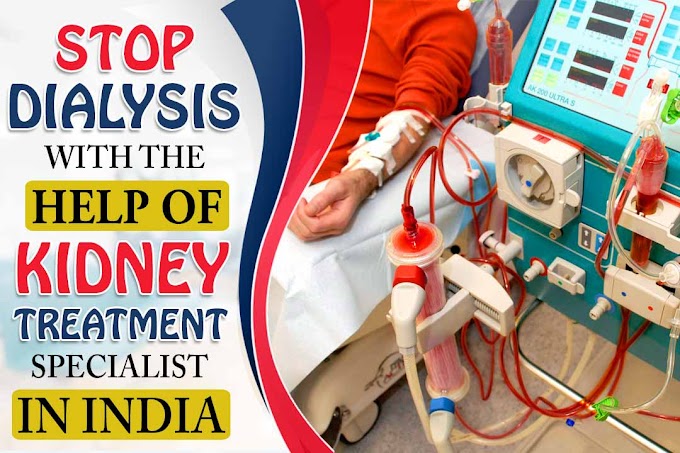If your lab report shows a high creatinine level with low eGFR, it means that there is something wrong with your kidneys, and you need to see the doctor before to bring your kidneys back on track.
Before we move further into this topic, let's introduce you to the term "creatinine" and eGFR.
What is creatinine?
Creatinine is a waste product that is typically generated during muscle breakdown. You're going down for another set or jogging another mile uphill. Your heart races, making every inch of your muscles on fire. This feels great, right? Working out at any time of the day feels good, but a lot is going on inside your body that you are not aware of. During working out, your muscles tear down during the process and build back with time. The normal wearing and tearing of your muscles produced a waste product that is known as creatinine.
Thinking about creatinine would be weird and the last thing you would want to think about between the sets, but it's important. Creatinine can be used as a tool to diagnose your kidneys' health.
The average creatinine level in our body is estimated to be around 0.84 to 1.21MG/DL; if your lab report shows creatinine level exceeds beyond this range for around 5.2 MG/DL, then it's a clear indication of kidney dysfunction, which can go worse with time.
What is the meaning of eGFR?
The term EGFR stands for Estimated Glomerular Filtration Rate (eGFR ), which helps your doctor determine your kidneys' health and how well your kidneys are working. Kidney failure doesn't cause any visible signs at its infancy, which makes it hard to get detected, but your doctor may ask you to have an eGFR test if you have any resonating symptoms.
Kidney failure is a cumulative loss of kidneys' functioning. Chronic kidney failure is categorized into five different stages, which indicates the eGFR level of your body.
- In stage 1 of CKD, the eGFR of the body is higher than 90, which indicates healthy kidneys with some mild symptoms of kidney damage.
- In stage 2 of CKD, the eGFR will mostly range between 89 to 60%, indicating mild loss of kidney function.
- In stage 3 of CKD, the eGFR of the body will range between 59 to 45%, indicating moderate loss of kidneys' functions.
- In stage 4 of CKD, the eGFR of the body will be between 29 to 15% that shows severe loss of kidney function.
- In stage 5 of CKD, the eGFR goes below 15, which shows that a person has lost almost 99% of their kidneys' functions and needs to undergo dialysis to live.
Why is having high creatinine levels dangerous?
Your fist-sized kidneys are in charge of purifying around 200 litres of blood from waste products that buildup inside the bloodstream from time to time. Your kidneys are sensitive to various conditions, diseases, and substances that can affect their function. When damaged, your kidneys ultimately lose their ability to purify blood in time, increasing the waste product level to a hazardous level. Having a creatinine level of more than 1.21 mg/dl indicates kidney failure.
Sudden loss of kidney function can make you more prone to serious health problems, such as brain tumours, stroke, and heart disease, which can be life-threatening.
What are the symptoms of high creatinine levels?
High creatinine level is an indication of a potential threat that indicates kidney problems. A person with a high creatinine level may not find any visible signs or complications of kidney failure. As the disease progresses with time, they may notice some symptoms, such as-
- Nausea
- Muscle cramps
- Fatigue
- High blood pressure
- Itchiness
- Swollen legs, ankles, and feet due to excessive fluid retention
- Vomiting
- Feeling pressure or pain in the chest
Don't remark on these symptoms as your call for action because it's impossible to cure kidney failure with routine medication if symptoms get visible. Therefore, it's recommended to get your urine and blood sample tested every year to keep in touch with your kidneys' health.
What causes high creatinine levels?
Apart from kidney dysfunction, your creatinine level can be increased due to various biological and lifestyle changes that include-
- Severe dehydration
- Excessive consumption of protein
- High-intensity exercise
- Regular ingestion of oral protein supplements
- Regular ingestion of medicines that can damage your kidneys
- Uncontrolled diabetes
- High blood pressure
- Inflammation caused in glomeruli
- High consumption of salt
- Drug toxicity
- Kidney infection
How to anchor down a high creatinine level?
This depends on the thing that causes high creatinine. If your kidneys have stopped working, there are some medications available that can prevent the progression of the disease. But the effect of such medicines can fuel out very soon without curing the main cause of the problem. If you wish for a genuine revival of your health, try Ayurvedic treatment for kidney failure.
Why Ayurveda?
Ayurvedic medications have been hype for the past few decades. Researchers have found that the demand for herbal products increased up to 8% from the previous year. The real reason behind the appealing reach of Ayurveda is the gift of holistic health it gives with a cure. The Ayurvedic treatment uses a holistic way of treatment; it works beyond the physiological aspects of the disease and gets into the root cause of the problem. Unlike other medications that work on the symptoms, Ayurvedic medicines get into the root cause of the problem to give 360-degree relief from the problem. In Ayurveda, the healing process starts with the alignment of life forces ( Vata dosha, pitta dosha, and Kapha dosha) that control our various bodily processes essential for our survival.
After that, the herbs strengthen the immune system and increase the body's ability to fight against diseases that can go severe in no time.
The last job is to maintain a delicate balance between mind, body, and spirit that promotes good health and disease-free life.












0 Comments